On the afternoon of the ceremony, the emperor would wear his ritual costume and be escorted by close to one thousand courtiers, princes of royal blood, musicians, dancers and uniformed soldiers. He would slowly ascend the three terraces to pay tribute at the altar. Among the gods worshiped originally were the god of earth, the god of water, the god of agriculture (who also has his own hall - the Hall of Prayer for Good Harvests), the god of the military, the god of religion and the god of civilians. When the service drew to a close, a sacrificial calf would be incinerated in front of the memorial tablets. After music and dancing, the emperor would return to the Forbidden City, secure in the belief that he would be blessed and protected by heaven until the next winter solstice.

A layout of the complex, again showing the significance of circles (heaven) and squares (earth).
Approaching the altar:
There are two walls that encircle the altar. Both are red and capped with blue tiles. The outer wall is square while the inner wall is round.
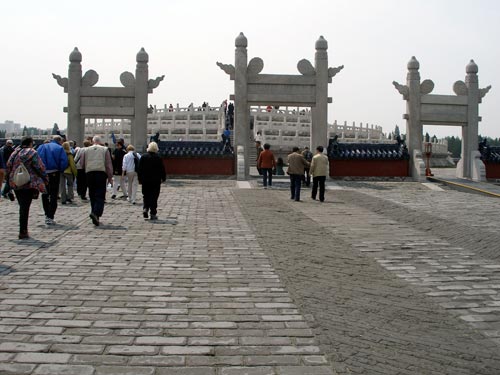
Approaching the inner wall
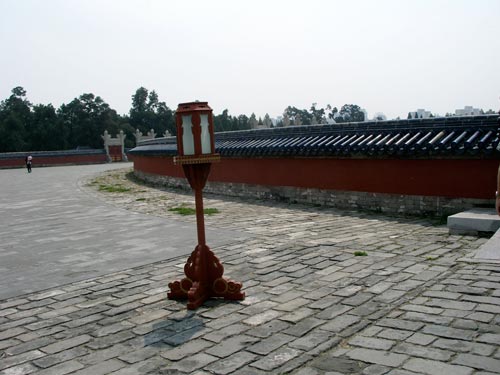
A view from in between the two walls
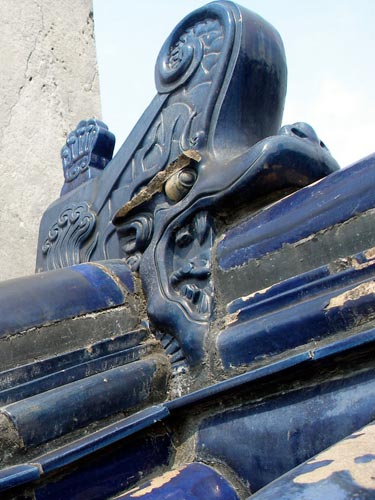
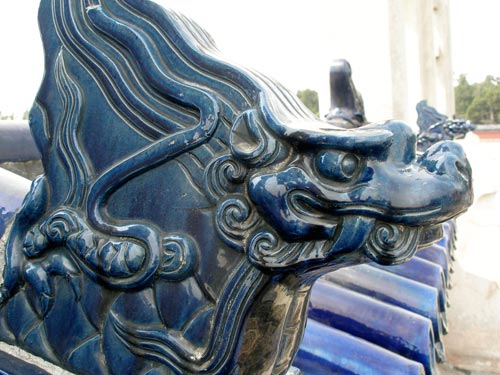
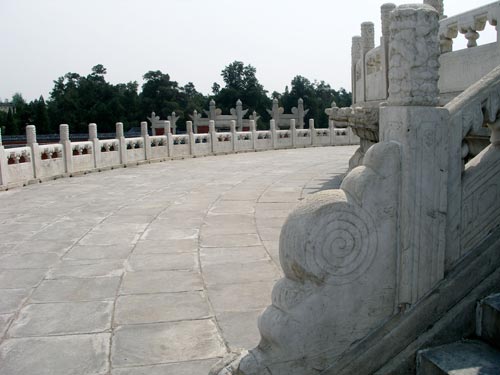
Each terrace has a flight of 9 steps. Even the number of carved balustrades on these terraces is a multiple of 9.
According to ancient Chinese philosophy, heaven and the odd numbers belonged to yang, while the earth and even numbers belonged to yin. Nine was the largest heavenly number accessible to man. They also believed that heaven consisted of nine layers and that the emperor's abode was on the uppermost tier.
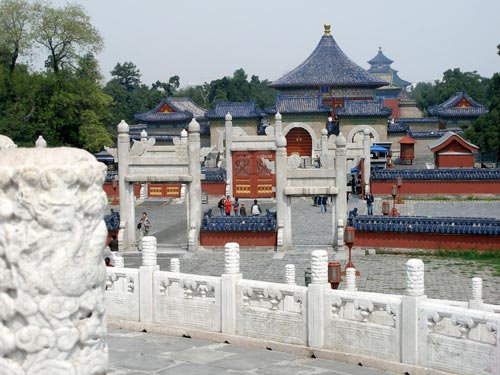
Looking north at the Imperial Vault of Heaven, and behind it the Hall of Prayer for Good Harvests
All of the structures in the temple complex are aligned on a north-south central axis, flanked by buildings to the east and west. The temple complex was constructed according to the dictates of feng shui (literally translated as "wind-water"), an ancient system of aesthetics believed to use the laws of both heaven (astronomy) and earth (geography) to help one improve life by receiving positive qi or ch'i (frequently translated as "energy flow", but a more literal translation is "breath").
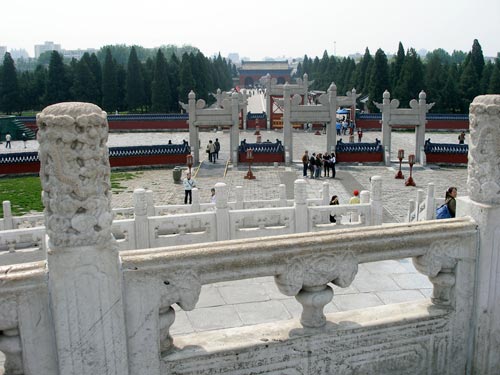
Looking south toward Zhaoheng Gate
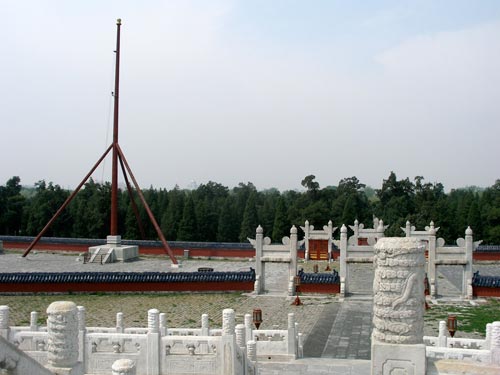
Giant heavenly lanterns would hang from these poles. Up until 1920, there were still three left.
The stone in the middle of the altar was was where the emperor used to stand to say his prayer. Known as Tianxingshi (Heaven’s Heart Stone), it is surrounded by nine concentric circles.
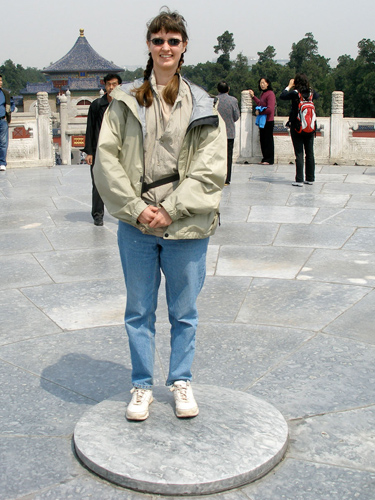
I demonstrate how a mere commoner can now stand where once only the emperor of China could set foot.
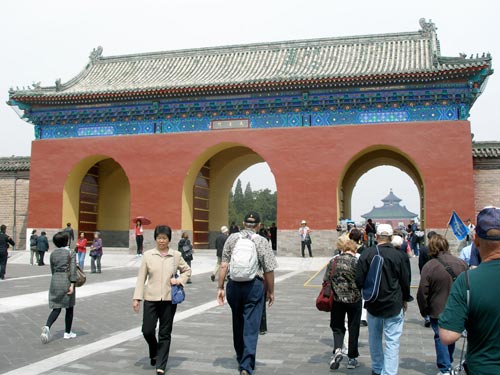
Passing through Chengzhen Gate on the Imperial Walkway Bridge back toward the Hall of Prayer for Good Harvests. Both the Gate of Prayer for Good Harvest and the top of the temple can be seen in the background.

